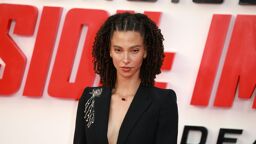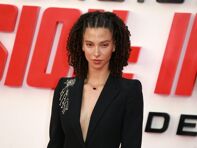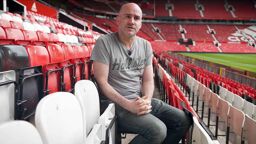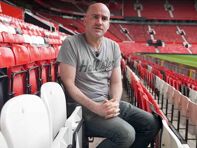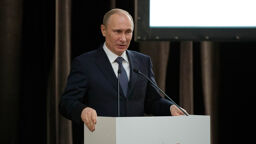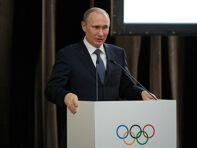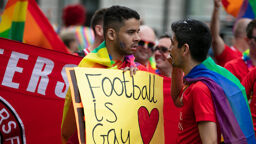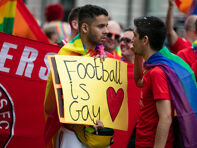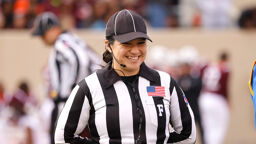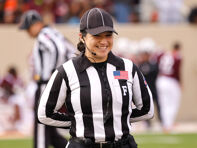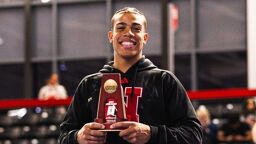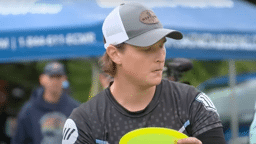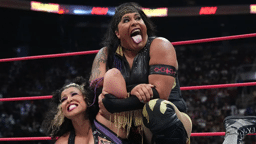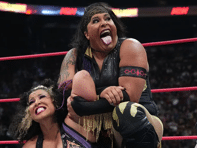It’s been heartbreaking to many that an an icon celebrated for their leadership on LGBTQ and human rights issues would break away from allyship, and join our enemies in advocating for exclusion of the most marginalized members of our community.
But early Sunday, as dawn broke in Europe, a ray of light appeared via the internet. It looked like a beacon of hope, a sign that perhaps a lesson had been learned. Could there even be… an apology?
Or would Martina Navratilova double down? Turns out, she did all that in one fell swoop.
In a new post Sunday on her personal website, the out lesbian and tennis superstar wrote what she described as an update to last month’s controversial essay in the Sunday Times of London, on the issue of transgender inclusion in women’s sports.
Navratilova says she was stunned to have found “her people” — the LGBTQ community — criticizing her for writing that trans women are men who “decide to be female.” She wrote she was even more gobsmacked to find her strongest supporters included right-wing homophobes such as, “the Washington Examiner (gasp) and James Woods (double gasp).”
She also complained of the “barrage of quite nasty personal attacks” by those who disagree with her perspective, and about being dropped — “jettisoned is a better word” — as an ambassador for Athlete Ally.
“So where did I go wrong?” she asked, adding, “Or did I go wrong?”
Noting in a tweet that, this time, her thoughts were not hidden behind a paywall, Navratilova made three main points:
- She’s sorry for suggesting trans inclusion is “cheating”
- She wants “to search for a solution that would work better than current arrangements,” which could be interpreted to mean an end to policies that generally allow for trans inclusion in sports
- Although she doesn’t believe there is a “definitive answer” to what she suggested could be labeled “the transgender problem,” she called for a debate on trans inclusion in sports focusing on “science, objectivity and the best interests of women’s sport as a whole.” not “feeling or emotion.”
Oh, and stop calling her names, like “TERF” and “transphobic.”
Let’s look at her updated essay, point by point.
“I’m sorry”
She did, in fact, apologize for using the word “cheat” — her exact quote in her original essay was that to allow trans athletes to compete with women is “insane and it’s cheating.”
“I certainly was not suggesting that transgender athletes in general are cheats,” Navratilova wrote in Sunday’s essay on martinanavratilova.com
But in the very next sentence she repeated the fantasy that a male might undergo a gender transition, even temporarily, “to gain a competitive advantage.” She called it a legal “possibility” and then cited the doping scandal that ended Lance Armstrong’s career as “surely instructive.”
In other words… he cheated, and so might someone transgender. Got it.
Navratilova once again echoed the arguments of those on the right who claim marriage equality discriminates against people with deeply-held religious beliefs, in expressing her “worry that by trying to be fair and inclusive for one group, others can be adversely affected, that eliminating one kind of discrimination can inadvertently give rise to another.”
Even straight people understand that equality is not a pie. Giving equal rights to those who have few or none doesn’t eliminate the rights of others.
"Equal rights for others does not mean fewer rights for you. It's not pie."
— jesse Williams. (@iJesseWilliams) August 8, 2017
Increased competition is the result of trans inclusion, not discrimination; adding baseball players of color to Major League Baseball teams didn’t mean white players were discriminated against. They did get more competition to earn a spot on a roster, though. How is this different? There may never be a “gay Jackie Robinson” as Cyd Zeigler wrote, but so far there has not been one transgender athlete who has dominated any sport, or even competed in an Olympic game in the 15 years since IOC rules were chaged to allow trans competitors.
“There is no perfect solution”
Navratilova correctly surmised, “There is no blanket rule that will solve all issues.” But she wrote that her idea of how to make it as “fair as practically possible” for all, is to admit somebody is going to get left out. The way to achieve inclusion is to… exclude?
“Therefore, any sensible policy must have some exclusions. But which ones? Where do you start and where do you end? Should different sports have different rules governing participation? Should recreational sport be subject to the same rules and standards as professional or Olympic competition? Should there be different rules for high-school sports, different rules for colleges etc?”
Once again, Navratilova cited the case of her friend, former coach and the trans woman she beat all three times they met on the court, Dr Renee Richards. Winning the right to compete on the women’s tennis tour in 1977, she said, “was a one-off case,” and dismissed other victories like hers, since there were “not that many.”
Like Christina Ginther’s $20K jury award for being kicked off a women’s football team for being trans?
Like Jesse Thompson’s successful fight to change in the boys’ locker room in Ontario along with his hockey teammates? His victory led to policy changes for all of Canada’s minor league teams.
Or Tia Thompson winning the right to compete as the woman she is in USA Volleyball competitions? There are so many more examples from running to powerlifting to swimming, these are but a few.
But Navratilova disregarded these advances, including at the Olympics, because she believes “many of those rules are neither based on science nor reason.”
Here’s where the tennis great, who we greatly admire, is just dead wrong.
“I am told the Olympic rule of allowing 10nmol/L of testosterone for trans people (from November 2015) was decided with no input from scientists and took all of 30 minutes of consideration to create and put into statute. That level has been changed to 5nmol/L (as of April 2018) and, one must ask, on what basis?”
Wish we knew who told her this, but in response to her claim the IOC made its decision to allow trans athletes to compete “with no input from scientists,” we believe she might get a different perspective from some of the scientists who served on that landmark panel, including: gold medalist rower Dr. Richard Budgett, an officer of the Order of the British Empire and medical director of the IOC; Dr. Ugur Erdener who is a surgeon, professor and renowned basketball player; or Dr. Arne Ljungqvist, once one of three top-ranked athletes for the high-jump, now a doctor as well as a university dean.
As to “what basis,” a 2016 article on this decision reported: “Medical staff at the IOC said that they changed the policy to adapt to current scientific, social and legal attitudes on transgender issues.”
When it came to testosterone and other physical aspects of transgender women, Navratilova doubled-down. “It is obvious that men have certain inherent physiological advantages over women,” she wrote, once again disregarding that trans women are women. “These include height, weight, bone-density and muscularity. These advantages play a different role depending on the sport, with power-lifting being the biggest and most obvious advantage.”
Not so, say at least three trans women: Brynn Tannehill, an advocate, expert, former Navy pilot and author, Dr. Marci Bowers, and JayCee Cooper, who was banned by USA Powerlifting from competing because she’s transgender.
Navratilova noted that, “scientifically, normal testosterone levels for men aged 19 and above range from 240 to 950 nanograms per deciliter (ng/dL). For women aged 19 and above, normal testosterone levels range from eight to 60 ng/dL. So even the highest level for women is lower by a factor of four than the lowest level for men.”
“The overwhelming consensus is that after some period of time on hormone replacement therapy (HRT), transgender individuals should be allowed to compete in accordance with their legal gender,” Tannehill wrote in 2016. She cited Bowers, a surgeon specializing in transgender health who discounted the so-called advantages of trans MMA fighter Fallon Fox:
“Most measures of physical strength minimize, muscle mass decreases, bone density decreases, and they become fairly comparable to women in their musculature. After as much time as has passed in her case, if tested, she would probably end up in the same muscle mass category as her biologically born female counterpart.”
As Outsports has reported, Cooper submitted five test results to USAPL in December 2018, from 2016 to the present day, all of them showing her testosterone levels are well under the guidelines for competition. Yet she was banned. Arguments about her bone density as a white transgender woman are nothing more than a red herring, since the bone density of black women is, on average, significantly higher than that of white women. In fact, some studies have shown the bone strength of black women to be higher than that of white men. And no one is arguing black women shouldn’t be allowed to compete against other women.
But there are those who argue this whole thing could be resolved with new divisions between trans and cisgender (meaning not transgender) competitions, as was historically done before during the era of segregation, and of course which still exist between men and women.
“The transgender problem”
Navratilova treads a very dangerous path in asking if this issue of inclusion should be called “the transgender problem.”
“…we should be wary of solving the transgender problem (if I may call it that) by creating further categories. For while they are intended to be fair and inclusive, multiple categories can also fragment a sport and cause confusion.” She is careful to conclude, “I am certainly not advocating violence against trans people, as has been suggested. All I am trying to do is to make sure girls and women who were born female are competing on as level a playing field as possible within their sport.”
The playing field will not ever be level if trans athletes are not given a chance to compete as the gender with which they identify. Separating, excluding and discriminating are not solutions.
And we agree with Ms. Navratilova that it would be best if this could be discussed with a focus on science, and objectivity, and most of all civilly, without name-calling by either side. That would include calling trans women “men” or “males.” That would mean understanding that trans women are women, and trans men are men.
Those who say otherwise are either TERFs or transphobes. And the existence of trans women as women is not up for debate.
For the record, the acronym “TERF” means “trans exclusionary radical feminist, it was coined by a cisgender straight woman, and is used to label those who seek to exclude trans women from so-called “women’s spaces.”
The word “transphobia” is defined as “the fear, hatred, disbelief, or mistrust of people who are transgender, thought to be transgender, or whose gender expression doesn’t conform to traditional gender roles,” according to the nation’s number one provider of transgender healthcare, Planned Parenthood. “Transphobia can prevent transgender and gender nonconforming people from living full lives free from harm.
Transphobia can take many different forms, including
- negative attitudes and beliefs
- aversion to and prejudice against transgender people
- irrational fear and misunderstanding
- disbelief or discounting preferred pronouns or gender identity
- derogatory language and name-calling
- bullying, abuse, and even violence.”
Labels suck, but the simple solution to avoid being called a “transphobe” or a “TERF” is to not behave like one, or to support their aims of exclusion.
Finally, here’s how we would have hoped Navratilova would have phrased her closing statement:
“If fair and open discussions can be held without preconceptions or prejudice, and without people being ‘transphobic’ or failing to accept trans women as women, trans men as men, or to recognize that it’s not just ‘having a different point of view’ when someone aims to exclude any athlete from competition because of their gender identity, it’s discrimination… then: by all means count us in!”
You can read more about the science that supports trans inclusion in this article, and review the links Navratilova provided in her updated essay, here.
EDITOR’S NOTE: A reference to Joseph Goebbels and Nazi propaganda known as “The Jewish Question” has been removed from this article. It was seen by some as implying that Martina Navratilova, in her describing the issue of transgender inclusion as “the transgender problem,” was herself advocating extermination of trans people or otherwise imitating Nazi-like behavior. That was not intended. Nor was it intended to distract from the very substantive aspects of this important conversation, which it may have done. As the author of this article, as well as Outsports managing editor, I understand that perception has overtaken facts. As a Jew and as a trans woman, I am sensitive to any term that seeks to describe a marginalized group such as transgender people as a “problem” to be solved. We are not a problem. — Dawn Ennis, @lifeafterdawn





